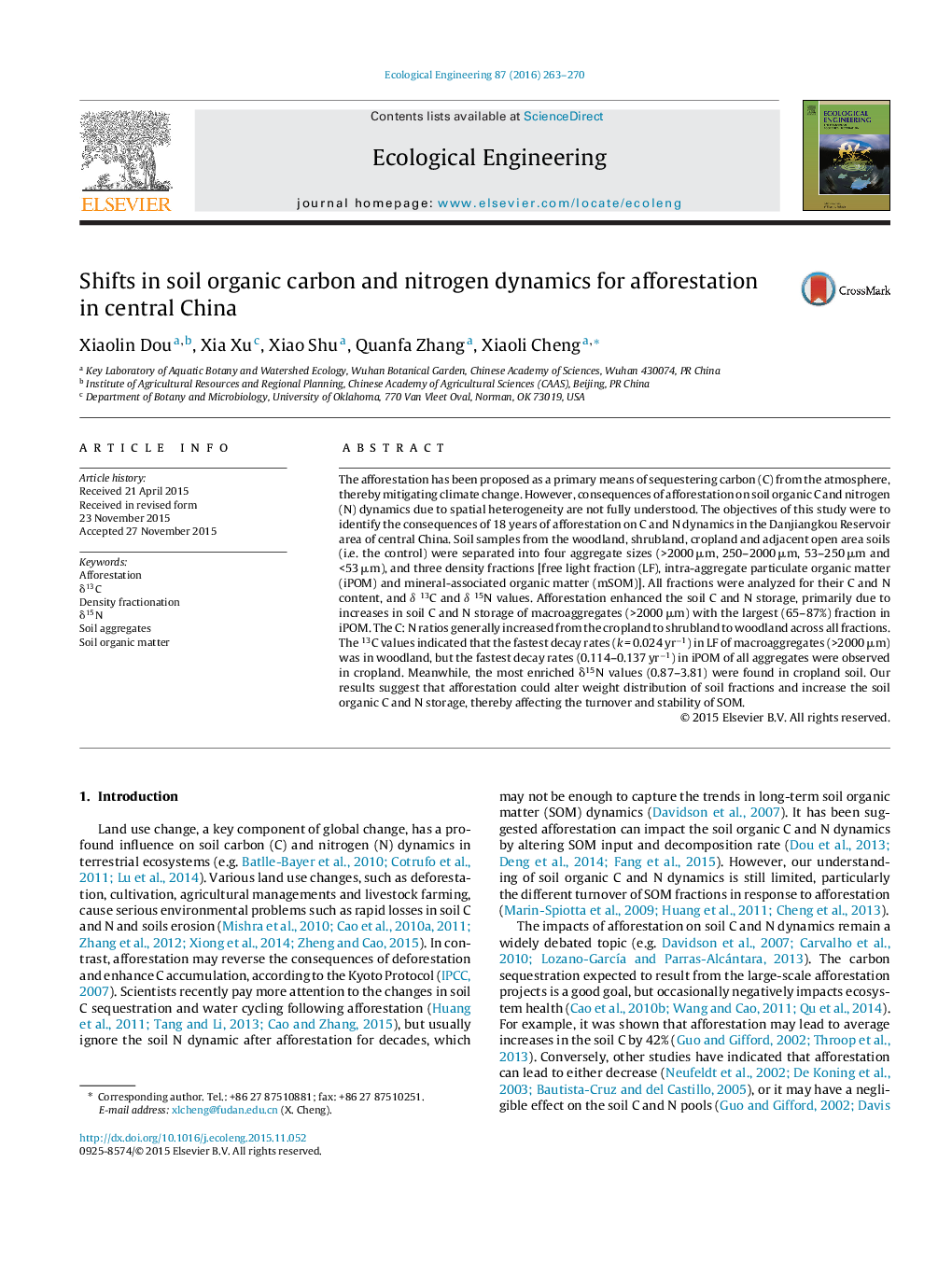| Article ID | Journal | Published Year | Pages | File Type |
|---|---|---|---|---|
| 6301512 | Ecological Engineering | 2016 | 8 Pages |
Abstract
The afforestation has been proposed as a primary means of sequestering carbon (C) from the atmosphere, thereby mitigating climate change. However, consequences of afforestation on soil organic C and nitrogen (N) dynamics due to spatial heterogeneity are not fully understood. The objectives of this study were to identify the consequences of 18 years of afforestation on C and N dynamics in the Danjiangkou Reservoir area of central China. Soil samples from the woodland, shrubland, cropland and adjacent open area soils (i.e. the control) were separated into four aggregate sizes (>2000 μm, 250-2000 μm, 53-250 μm and <53 μm), and three density fractions [free light fraction (LF), intra-aggregate particulate organic matter (iPOM) and mineral-associated organic matter (mSOM)]. All fractions were analyzed for their C and N content, and δ 13C and δ 15N values. Afforestation enhanced the soil C and N storage, primarily due to increases in soil C and N storage of macroaggregates (>2000 μm) with the largest (65-87%) fraction in iPOM. The C: N ratios generally increased from the cropland to shrubland to woodland across all fractions. The 13C values indicated that the fastest decay rates (k = 0.024 yrâ1) in LF of macroaggregates (>2000 μm) was in woodland, but the fastest decay rates (0.114-0.137 yrâ1) in iPOM of all aggregates were observed in cropland. Meanwhile, the most enriched δ15N values (0.87-3.81) were found in cropland soil. Our results suggest that afforestation could alter weight distribution of soil fractions and increase the soil organic C and N storage, thereby affecting the turnover and stability of SOM.
Related Topics
Life Sciences
Agricultural and Biological Sciences
Ecology, Evolution, Behavior and Systematics
Authors
Xiaolin Dou, Xia Xu, Xiao Shu, Quanfa Zhang, Xiaoli Cheng,
